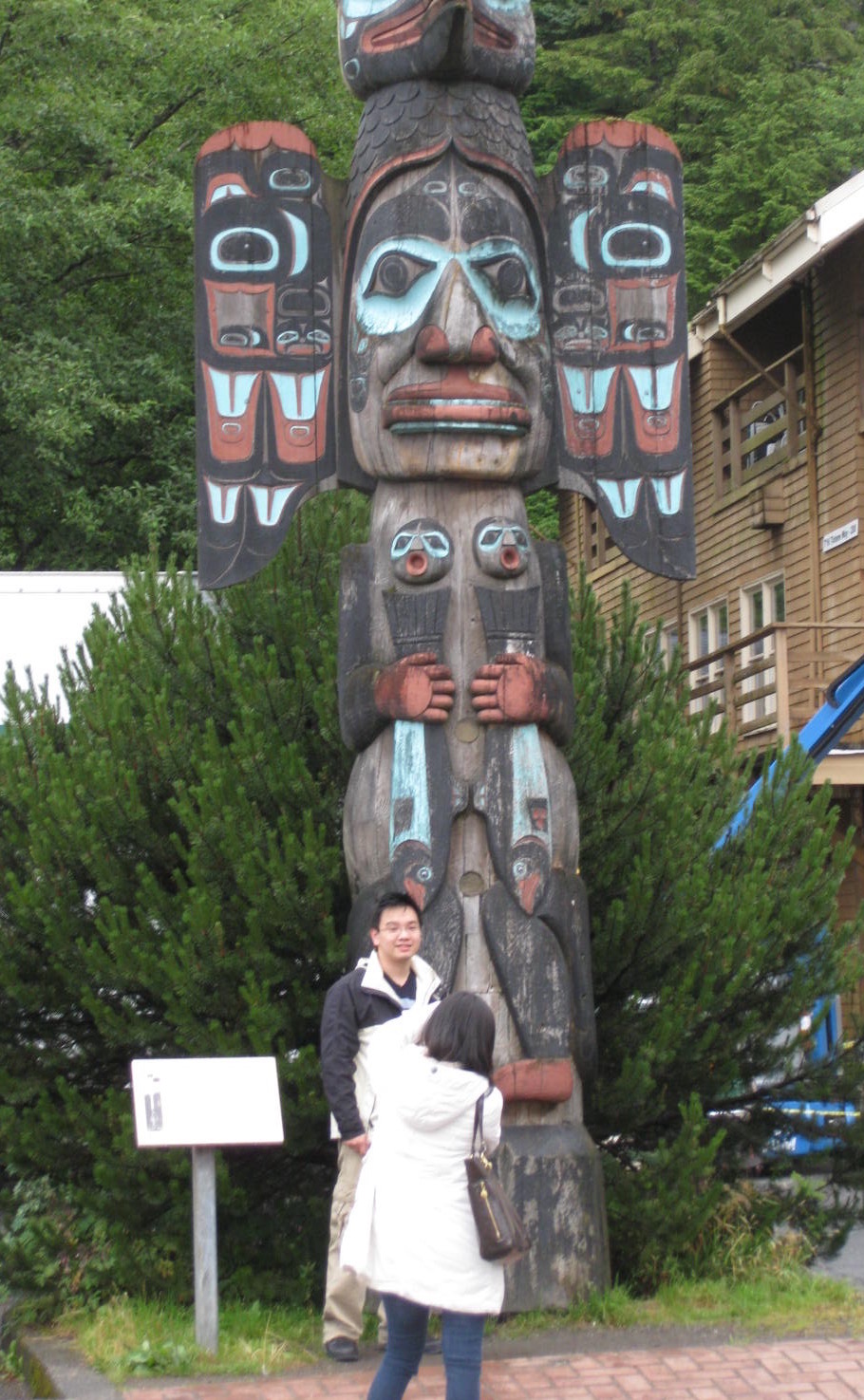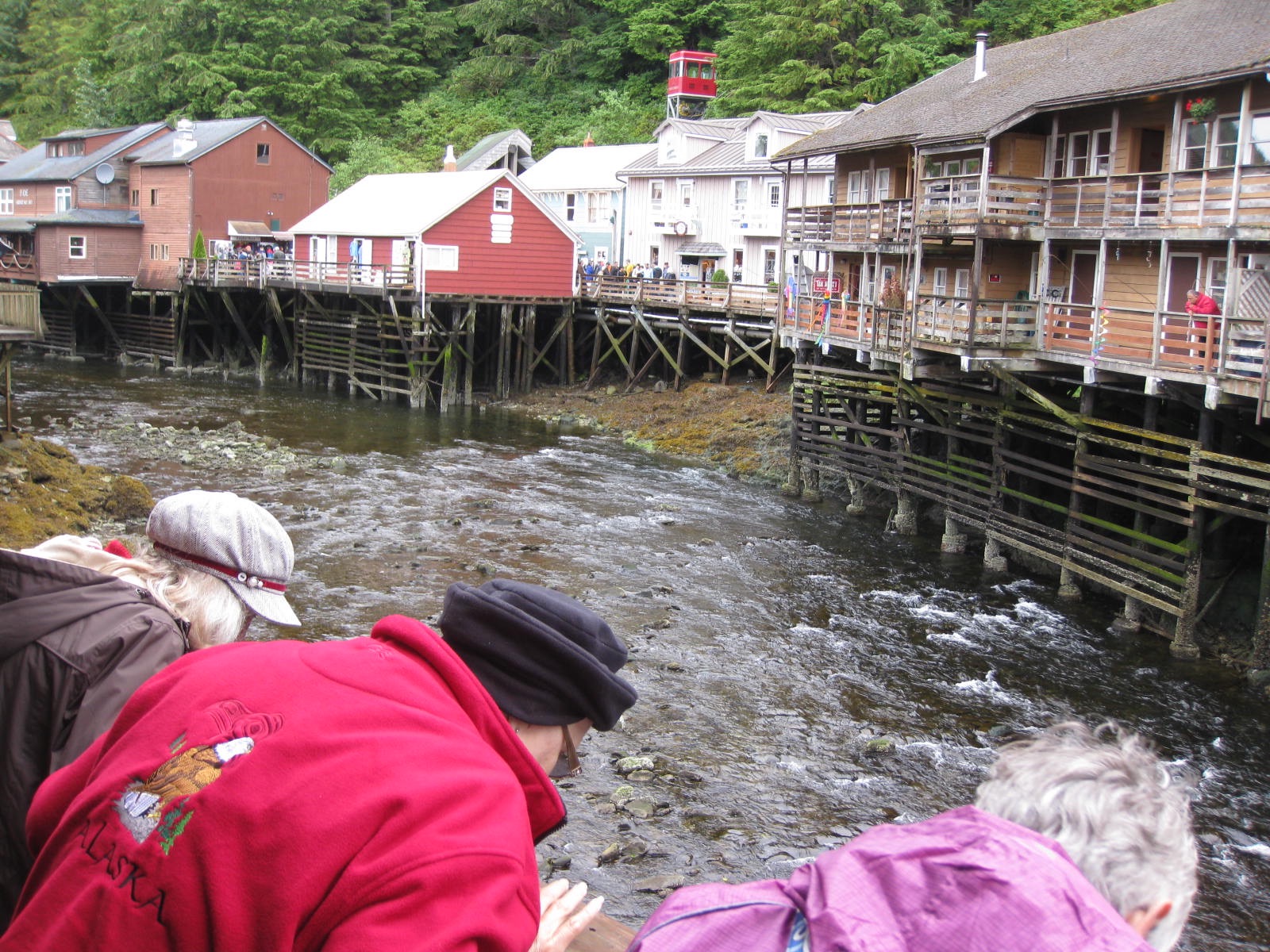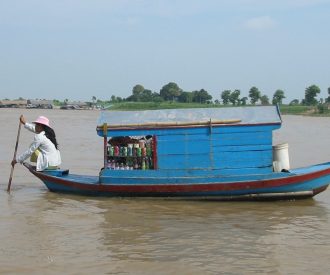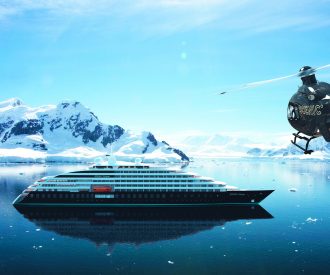Ketchikan, Alaska
Docks: Small cruise ships dock downtown in the heart of things.
Best For: Fishing enthusiasts, hikers, and Native American history buffs. And those who don’t mind rain. A lot of it.
Snapshot: Even with the throngs of cruise ships passengers visiting on a typical summer day, Ketchikan still feels rugged and old-school; the kind of pioneer town we imagine Alaska to be all about. Ketchikan is a walk-able town, just be sure and venture beyond the barrage of soulless jewelry chain stores and T-shirt emporia. Walk up and down the wooden stairs that connect the streets, and check out the totem poles and public art dotting the town. Ketchikan’s small art galleries and shops are also worthwhile for locally made jewelry and paintings.
Ketchikan is known as the rain capital of America and gets on average 150 inches a year, more than all the other Alaska ports. Definitely bring a raincoat and umbrella — excursions are rarely canceled due to the weather. Many of them include trips to nearby Mendenhall glacier, excursions to see totem poles, or tours involving fishing for or eating salmon.
Natural Highlights:
- Misty Fjord National Monument. The 2.3-million-acre, Connecticut-size area looks like something out of The Lord of the Rings, with volcanic cliffs rising up to 3,150 feet, dense hemlock and spruce forests, high ridges covered in alpine grass, and a watery passage through it all that’s so narrow only small ships can get any significant distance in. To see it, you have to spring for a seaplane excursion.
- Salmon. You don’t have to go far to see five different types of meaty salmon — Chinook, Pink, Coho, Chum and Sockeye— swimming up stream during the summer months to spawn, just look down under the Creek Street boardwalk, a few minutes walk from the docks.
Historic Sites:
- Totem poles. Greater Ketchikan claims more than any other place on earth. See them scattered around town or en masse in Saxman Totem Park, a few miles outside of Ketchikan, where you may catch a master carver is action. A bit further out, Totem Bight State Historical Park is another option.
- Creek Street. A row of former brothels line this century-old boardwalk built high up on wooden stilts above a busy salmon stream. Creek Street was once Ketchikan’s red light district and business was brisk through the 1950s. Now it’s all kitsch and shopping, though charming enough to warrant a stroll.
Best Excursions:
- Spending a few hours on a real working fishing trawler is a great way to get out into the Alaska wilderness and to feast on halibut or salmon. Whatever you catch can be processed and shipped home for you.
- One of your best chances for spotting the illusive black or brown bears in the wild is an excursion from Ketchikan to Neets Bay in the Tongass National Forest, home to the region’s largest concentration of black bears.
- Rent a bike and pedal (or walk) along the scenic 2.5-mile waterfront bike path that starts on the far side of cruise ship Berth 1 and the Thomas Basin Boat Harbor and ends at Saxman Totem Park. (Rent from Southeast Exposure at 1224 Tongass Avenue within walking distance of the docks; call ahead to reserve your bikes, southeastexposure.com).
- Flightseeing over the Misty Fjords National Monument can be a thrilling ride if the weather is cooperating. Remember, it rains here more than other Alaska ports, so even if the plane takes off, you may not see much. It’s risky. Juneau is a better bet weather-wise.
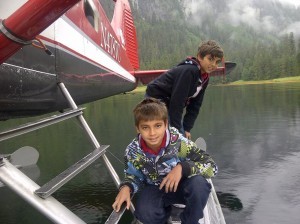
Pontoon plane and helicopter flight excursions are super memorable if the weather cooperates. * Photo: Arun Sarna
Eating: For a great plate of what Alaska does best — fish and chips — bop into Burger Queen, a tiny joint at 518 Water Street (on the far side of the tunnel). The friendly staff has been serving up thick slabs of fried halibut and creamy milkshakes for years.
Quirky fact: The notorious “Bridge to Nowhere” project to connect Ketchikan and nearby Gravina Island, where their international airport lies, made national headlines in 2007 before it was eventually rejected. To fly in or out of the airport, you must take a ferry.
Another quirky fact: Daily tides here dramatically fluctuate between 10 and 18 feet.
Reading list: “Travels in Alaska,” by naturalist John Muir. First published in 1915.
— HMS
Posted In:



